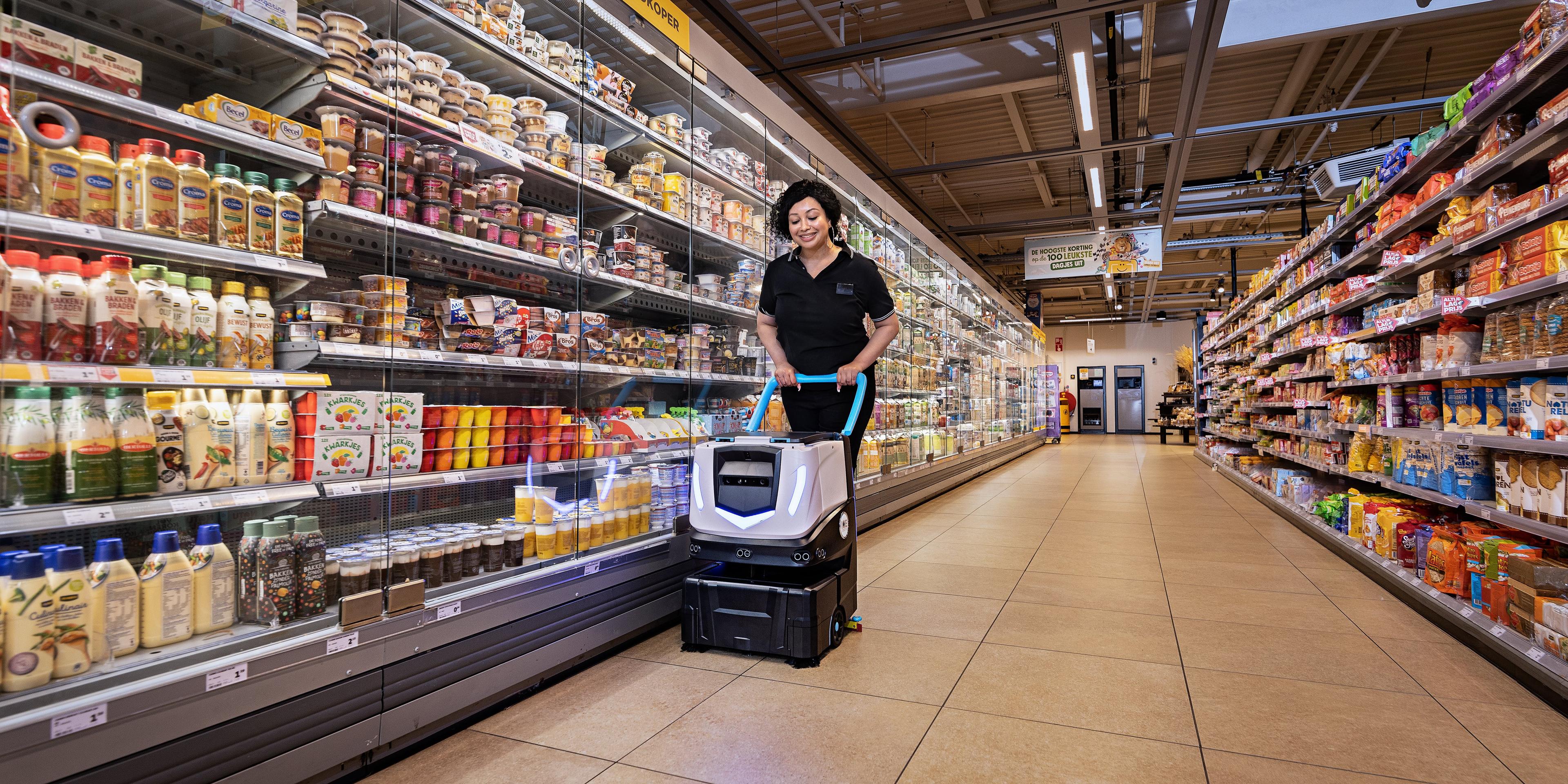March 12, 2024
Why the Grocery Industry Needs to Focus on Employee Wellbeing for Future Success


Even though we are post-pandemic, the grocery industry continues to face tough labor challenges.
The typical complaints still stand: long hours, inconsistent schedules, poor treatment from co-workers and customers, a lack of skill and job growth opportunities, and recently the rise in theft and hostility that is causing many employees additional stress.
This has left retailers short-staffed and in a position where they can no longer avoid focusing on employee wellbeing if they want to succeed.
In addition to labor shortages and high attrition, attracting talent has been difficult due to competition from other business sectors that have been able to offer high sign-on bonuses and higher hourly wages.
In addition to staffing issues, the grocery industry has also come face to face with consumers whose shopping habits have changed, resulting in new expectations about the shopping journey.
Digital tools such as apps, delivery services, and more have made shopping easier and more convenient for the consumer—but for grocers, this has complicated how they meet and deliver customers' needs and wants.
These challenges all impact frontline staff and the demands have made working in the grocery industry more hectic and stressful than in the past.
However, by focusing on employee well-being, the grocery industry can overcome these challenges and improve the employee experience.
The combination of these issues has created a predicament for grocers, and one they can no longer avoid addressing.
According to Rahul Mathew, Beatriz Rastrollo, Patrick Simon, and Raphaël Speich writing for McKinsey,
“The pandemic has dramatically accelerated these trends, leaving grocery retailers with little choice but to transform their people models. The upside? The sector can not only address these challenges but also drive sustainable competitive advantage with talent.”
For grocers, transforming their people models includes cultivating experienced and friendly employees willing to deliver not only exceptional onsite service, but also to assist in meeting the needs of the busineess in terms of servicing online shopping platforms as well.
Hybrid shopping habits have created additional roles for employees to take on, and grocers must keep up with these to appease customers.
According to Winsight Grocery Business “To keep customers, grocers must focus on building loyalty. One very tangible way to do that is by delivering a superior customer experience regardless of whether a customer shops online or in-store.”
What it boils down to is investing in employees to help meet the changes in shopping behavior, the requests for more unique and better experiences, and to deliver convenience.
Without helpful, friendly, and experienced employees, grocers will struggle to keep up with shoppers and meeting future business needs.
Investing in employees requires finding ways to elevate the work, provide more training and career growth opportunities, and improve the treatment of employees, including more flexibility with scheduling.
Increasingly grocers are evaluating how to implement and utilize autonomous solutions.
Metcalf's Market is one example of a grocer exploring multiple options to help offset labor labor issues and improve store performance. One of the many things they are considering to offset labor challenges is automation.
“‘We’re looking at that at every aspect of things that we do,’” Tim Metcalfe said, noting that the company is eyeing technology to reduce labor, like robots to clean the floors overnight, and Sally, the salad-making robot,"according to an article in Grocery Dive.
Adding autonomous solutions can help for a variety of reasons. For example, adding a cobot (collaborative robot) like Cobi 18, an autonomous floor scrubber, frees staff from doing repetitive floor cleaning, which in turn allows staff to focus on customers and create a better experience for shoppers.
This helps grocers tackle a variety of issues in multiple ways. For example, automation helps with the following:
By utilizing robotics, grocery retailers not only support the staff on site and improve the worker experience, but they also offset the challenges they are up against due to labor shortages.
The staff they do have can focus on more critical work while robotics solutions take care of the repeptitive and mundane work.

This can happen in a variety of ways and can have a wide-reaching impact on the organization.
Just as grocers are experiencing changes in how the workforce operates, they are also experiencing changes in required job responsibilities due to online shopping and delivery options.
For example, as automation becomes a larger part of daily operations, employee's job functions change.
For a staff member, the task may change from scrubbing the floors to instead managing the technology that can scrub the floors autonomously. Staff can start the machine, keep track of the machine, and focus on other tasks at the same time.
The same is true of self-checkout stations. While this technology is designed to guide a customer through the check-out process, there are those occasions where a staff member is necessary to step in and assist. The job then becomes more focused on customer engagement, deescalating tense situations, and adding a human element to the customer journey.
The key here is to identify where these situations arise, how the job of the employee will change, and to implement training that allows staff to take on different responsibilities.
Not only does this elevate the role of grocery store staff, but it also provides them with more engaging work and allows for opportunities to learn new technology and skills, all of which can be used to build career path skills.
This in turn will help grocers provide better experiences for customers.
Getting to know your staff and including them in conversations regarding store processes and procedures that impact their daily work can be beneficial for a few reasons.
Not only does this help develop a better relationship with your team, but it also makes them feel included and valued.
Poor treatment from managers and customers is one of the top reasons retail staff workers burn out and leave.
Instead of managing your team as a “boss” try managing your team as a leader; meaning, practice getting to know members individually, understand their unique situations, and make them feel heard.
According to Brett Patrontasch, CEO, and co-founder of Shyft, the mobile-first workforce management solution, “By conversing with your employees as individuals, they’ll become naturally inclined to interact with customers in the same manner, from the checkout line to the meat department, customer service desk and more.”
Patrontasch goes on to highlight these tips:
The point here is that the better you treat your staff, the better they will treat customers because the value is placed on people and is modeled by leaders.
For today’s consumers, who highly regard welcoming store experiences and working with polite and knowledgeable staff, teaching your staff to respond to shoppers positively is a win-win. You’ll be meeting the needs of both your staff and customers.

Adopting more flexible scheduling and time off benefits is an important way to let your staff know you are listening to their requests.
The retail industry has long been faced with the challenges of unpredictable store traffic leading to a variety of scheduling complications, long hours, and shifts that do not provide ample break time in between.
Complaints from grocery store workers suggest these issues are the reasons why they leave their jobs. In fact, “85 percent said it’s important to have schedule control” in a survey reported by Retail Wire.
According to the same survey results, where managers of hourly employees were surveyed, “Forty-two percent said managing call-outs and no-shows takes the most time and effort...and Thirty-nine percent believe their employer could improve their experience by providing tools that make it easier to communicate with their team.”
Adding tools that improve employee communication, shift swapping or pick-up, and more is one way to help improve schedule flexibility.
“Managers overwhelmingly agree (84 percent) that efficiency and productivity would improve if they were able to communicate with employees through the same app that they use to view their schedules, ” according to Retail Wire.
When grocers take the time to focus on employee wellbeing, provide new opportunities to work with technology, improve training and reskilling opportunities, listen to feedback and requests, and lead with compassion, they can develop a team of employees who are loyal and value the work they do. In turn, this creates a team of people who are willing to push the business forward.
ICE Cobotics is a leading technology and cleaning equipment company specializing in autonomous solutions available through an all-inclusive subscription. If you would like more information on Cobi 18, please reach out to our automation experts.
Ready to Explore Automation? Talk to an Automation Expert